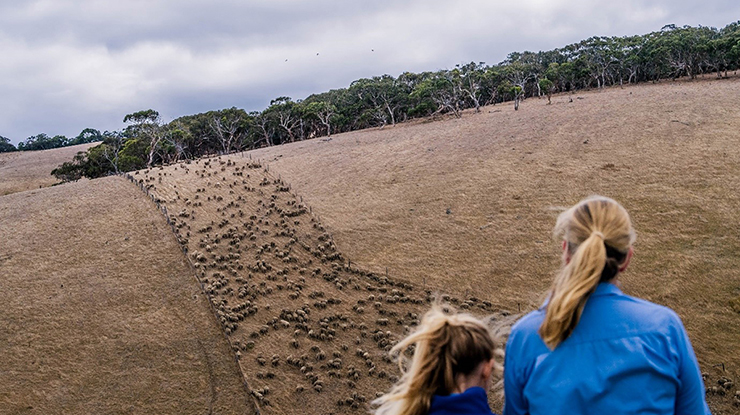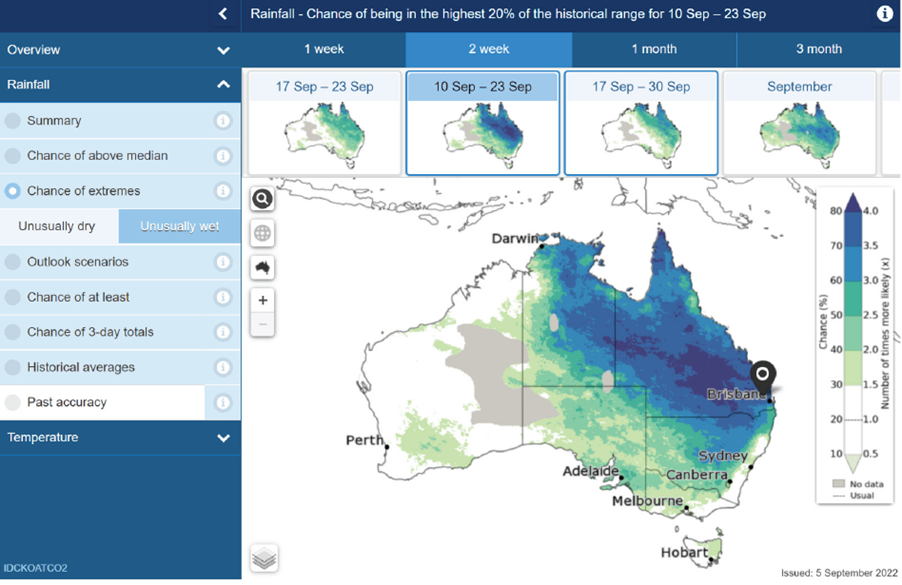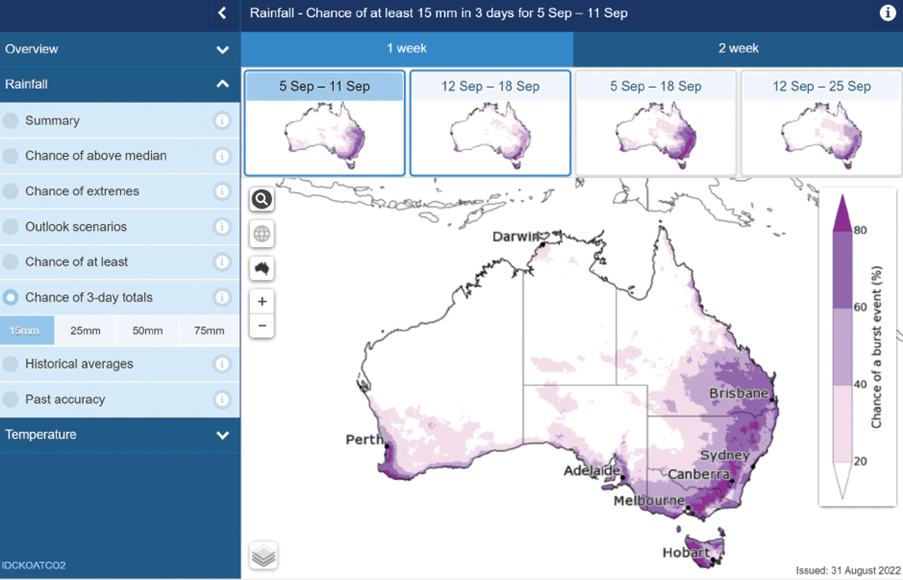
Understanding the likelihood of an extreme weather event can assist producers to plan, prepare and respond through better decision making on-farm.
As part of the MLA-supported Forewarned is Forearmed project, the Bureau of Meteorology has launched five seasonal climate forecasting tools to provide more insight into the possibility of extreme weather events:
- Chance of extremes maps for rainfall and temperature
- Chance of 3-day totals maps
- Decile bar charts for rainfall and temperature
- Timeline graphs for rainfall and temperature
- Probability of exceedance graphs for rainfall.
Here, we look into each tool and how producers can use them to plan operations past the seven-day weather forecast.
The chance of extremes maps show the predictions for unusually high and low rainfall or temperatures over one week, two weeks, one month or three months. These maps are an extension of the chance of above median maps.
The colouring in the maps indicates the chance or likelihood of experiencing extremes in rainfall or temperature as shown in Figure 1.
Figure 1: An example of the Climate Outlook Map forecasting unusually wet conditions issues during September 2022 for the two weeks between 10 – 23 September across eastern Australia. Reproduced from Agriculture Victoria’s eLearning course ‘Using seasonal climate prediction tools’.

The increasing intensity of colours used in the maps correlates to increasing chance of rainfall or temperature in extreme deciles. In a neutral forecast, the likelihood of any outcome is 20%. As such, the likelihood of an extreme dry or cold (decile 1 and 2) or extreme wet or hot (decile 9 and 10) is also 20%, and no distinct indication can be drawn from the forecast model results. Areas without data are represented in grey.
In the example in Figure 1, the map shows an above 80% chance of rainfall being in decile 9 and 10 of historical data for central Queensland. This means the likelihood of extremely wet conditions is four times higher than the chance of median rainfall typical for that time of year.
The chance of extremes map can show the likelihood of extreme cold events, however, it can’t indicate a frost. Minimum temperatures may give an indication of frost potential at certain times of the year, and this can be explored further using other Bureau tools and seven-day forecasts.
The chance of 3-day totals forecast maps show the chance of receiving ‘at least’ a given amount of rainfall total over three consecutive days. Forecasts are available for 15mm, 25mm, 50mm and 75mm of rain during a one-week or two-week period. Historic data (1960–2019) for chance of 3-day totals is available and accessible. Figure 2 shows a chance of 3-day totals map for the period 5 September to 11 September 2022.
Figure 2: Chance of 3-day totals for the period of 5 September – 11 September 2022.

Note that the location-specific graphs in the chance of 3-day totals map do not present probabilities or deciles on a three-day timeframe. Instead, the location-specific graphs present data on the outlook for either one week or two weeks when selected in the chance of 3-day totals map, as with the chance of extremes map.
In this short video tutorial, Dr Tim Cowan from University of Southern Queensland demonstrates how to use these maps on-farm:
Tactical decisions ahead of extreme weather events
Long-term or strategic decision making can be the most cost-effective way to manage extreme events. Strategies to mitigate the risk of extreme weather include planting wind breaks and constructing shade structures for heat events, destocking early ahead of drought, or fencing off flood-prone areas.
Determining the costs and benefits of these decisions requires historical climate data and climate change projections on the frequency and severity of rare events, hence the importance of accessing resources such as the five Forewarned is Forearmed forecasting tools.
The tool descriptions above were sourced from the Department of Agriculture, Fisheries and Forestry’s publication Southern Australian Red Meat Industry Workbook: Making better tactical decisions using the climate forecast tools








